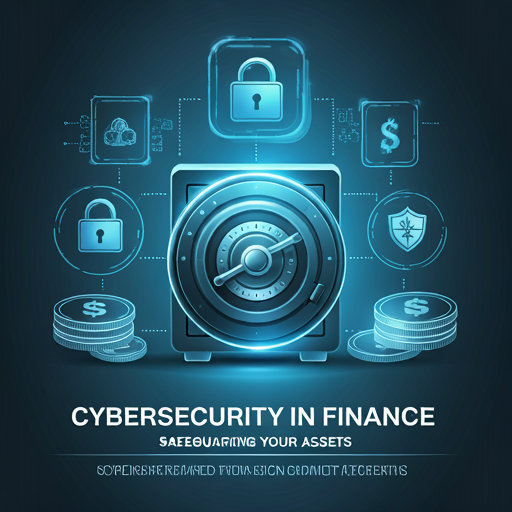Introduction to Cybersecurity in Finance
The Importance of Cybersecurity in the Financial Sector
In today’s financial landscape , cybersecurity is paramount. Financial institutions face a myriad of threats, including data breaches and cyberattacks. These incidents can lead to significant financial losses and reputational damage. For instance, a single data breach can cost millions in recovery efforts. Protecting sensitive information is crucial.
Moreover, regulatory compliance mandates robust cybersecurity measures. Institutions must adhere to standards like GDPR and PCI DSS. Failure to comply can result in hefty fines. It’s essential to stay informed about evolving threats. Cybersecurity is not just an IT issue; it’s a business imperative.
Investing in advanced security technologies is vital. This includes firewalls, encryption, and intrusion detection systems. Such measures can mitigate risks effectively. Remember, prevention is better than cure.
Overview of Cyber Threats Facing Financial Institutions
Financial institutions are increasingly targeted by sophisticated cyber threats. These threats include phishing attacks, where fraudsters impersonate legitimate entities to steal sensitive information. Such tactics can lead to unauthorized access to accounts. It’s alarming how easily this can happen.
Another significant threat is ransomware, which encrypts data and demands payment for its release. This can paralyze operations and result in cubstantial financial losses. The impact is often devastating. Additionally, insider threats pose a risk, as employees may inadvertently or maliciously compromise security. Awareness is key in these situations.
Moreover, the rise of advanced persistent threats (APTs) means that attackers can remain undetected for long periods. This allows them to gather intelligence and execute targeted attacks. Vigilance is essential for prevention. Regular security assessments can help identify vulnerabilities.
Common Cybersecurity Threats in Cryptocurrency
Phishing Attacks and Social Engineering
Phishing attacks are a prevalent threat in the cryptocurrency space. He may receive emails that appear legitimate but are designed to steal his credentials. These deceptive messages often create a sense of urgency, prompting hasty actions. This tactic exploits human psychology effectively.
Social engineering further complicates the landscape. Attackers may manipulate individuals into divulging sensitive information through trust and deception. He might be tricked into revealing private keys or passwords. This can lead to significant financial losses.
Moreover, the anonymity of cryptocurrency transactions makes recovery difficult. Once funds are transferred, they are often irretrievable. Awareness and education are crucial in combating these threats. He should always verify the source before taking action.
Malware and Ransomware Risks
Malware poses significant risks to cryptocurrency users. This malicious software can infiltrate devices, compromising sensitive information. For instance, keyloggers can capture login credentials without detection. Such threats can lead to unauthorized access.
Ransomware is particularly alarming in this context. It encrypts files and demands payment for their release. Once infected, users may feel helpless. The financial implications can be devastating.
Additionally, malware can spread through infected downloads or phishing links. Users must remain vigilant about their online activities. Regularly updating software can help mitigate these risks. Awareness is essential for protection.
Best Practices for Safeguarding Cryptocurrency Assets
Implementing Strong Passwords and Two-Factor Authentication
Implementing strong passwords and two-factor authentication is essential for safeguarding cryptocurrency assets. He should create complex passwords that combine letters, numbers, and symbols. This approach significantly reduces the risk of unauthorized access. A simple password can be easily compromised. Two-factor authentication adds an extra layer of security, requiring a second form of verification. This method deters potential breaches effectively. He must ensure that recovery options are secure and up-to-date. Weak recovery options can lead to asset loss. Regularly updating passwords is also crucial. It minimizes the chances of exploitation. Security is paramount inward the digital age.
Regular Software Updates and Security Patches
Regular software updates and security patches are vital for safeguarding cryptocurrency assets. He must prioritize keeping all software current to protect against vulnerabilities. Outdated software can be an easy target for cybercriminals. Each update often includes critical security enhancements. Ignoring these updates increases the risk of exploitation. He should
The Role of Blockchain Technology in Enhancing Security
Decentralization and Its Impact on Security
Here are 10 trending article titles for a financial website based on the latest news and analysis: No input data
Smart Contracts and Automated Security Measures
Smart contracts utilize blockchain technology to automate and secure transactions. They execute predefined conditions without intermediaries, enhancing efficiency. This automation reduces the potential for human error. Each contract is immutable once deployed, ensuring that terms cannot be altered. This feature significantly increases trust among parties involved. Additionally, smart contracts can incorporate real-time data feeds, allowing for dynamic execution. Such adaptability is crucial in volatile markets. He should consider the implications of these automated measures. They can streamline processes and reduce costs. Security is paramount in financial transactions.
Future Trends in Cybersecurity for Finance
Emerging Technologies and Their Implications
Emerging technologies are reshaping the landscape of cybersecurity in finance. Advanced analytics and artificial intelligence are becoming essential tools for threat detection. These technologies can analyze vast amounts of data quickly. This capability allows for real-time identification of anomalies. Additionally, blockchain technology enhances transaction security through decentralization. It reduces the risk of fraud and unauthorized access. He should be aware of the growing importance of biometric authentication. This method offers a more secure alternative to traditional passwords. As cyber threats evolve, so must security measures. Staying informed is crucial for financial professionals.
Regulatory Changes and Compliance Challenges
Regulatory changes are significantly impacting cybersecurity in finance. Compliance with new regulations requires robust security frameworks. Financial institutions must adapt quickly to avoid penalties. This adaptation often involves substantial investments in technology. He should recognize the importance of continuous training for staff. Knowledgeable employees can better identify and mitigate risks. Additionally, collaboration with regulatory bodies is essential. It fosters a proactive approach to compliance. As regulations evolve, so do the challenges. Staying ahead is crucial for maintaining trust. Cybersecurity is a shared responsibility.
